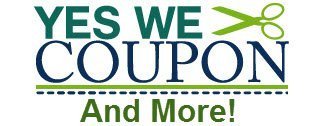
The Building Blocks of Technology: A Comprehensive Overview of Software Basics
Technology has become an integral part of our daily lives, shaping the way we live, work, and communicate. At the heart of technology lies software, the programs and applications that power our devices and enable us to perform tasks more efficiently. Understanding the basics of software is essential for anyone looking to navigate the increasingly digital world we live in today.
What is Software?
Software refers to a set of instructions or programs that tell a computer how to perform specific tasks. It is the intangible component of a computer system, in contrast to the hardware which comprises the physical components such as the processor, memory, and storage. Software can be divided into two main categories: system software and application software.
System Software
System software is the foundational software that manages and controls the computer hardware. It includes operating systems such as Windows, macOS, and Linux, which provide an interface for users to interact with the computer and manage its resources. Other examples of system software include device drivers, utilities, and firmware.
Application Software
Application software refers to programs designed for specific tasks or purposes, such as word processing, spreadsheet management, graphic design, and gaming. This type of software is created to fulfill the needs and preferences of users, allowing them to perform various functions and activities on their devices.
Programming Languages
Programming languages are used to write and create software programs. They provide a set of rules and syntax that programmers follow to develop applications. There are numerous programming languages available, each with its own strengths and weaknesses. Some popular programming languages include Python, Java, C++, and Ruby.
Development Tools
Development tools are software applications that programmers use to write, test, and debug code. These tools provide an integrated environment for developers to streamline the software development process, making it more efficient and effective. Examples of development tools include text editors, compilers, debuggers, and integrated development environments (IDEs).
Software Testing
Software testing is a crucial component of the software development lifecycle, ensuring that programs function correctly and meet the specified requirements. Testing helps identify bugs, errors, and vulnerabilities in software, allowing developers to fix them before the program is released to users. Common types of software testing include unit testing, integration testing, and user acceptance testing.
Software Deployment
Software deployment involves the process of distributing and installing software on users’ devices. This may include packaging the software, creating installation files, and configuring settings to ensure the program runs smoothly on different systems. Deployment is a critical step in the software development process, as it determines how the software will be delivered to end-users.
Conclusion
In conclusion, software is the building block of technology, enabling us to harness the power of computers and devices to accomplish tasks and solve problems. Understanding the basics of software, including system and application software, programming languages, development tools, testing, and deployment, is essential for anyone looking to navigate the digital landscape successfully. By mastering these fundamentals, we can harness the full potential of technology and drive innovation in the digital age.
[ad_2]
